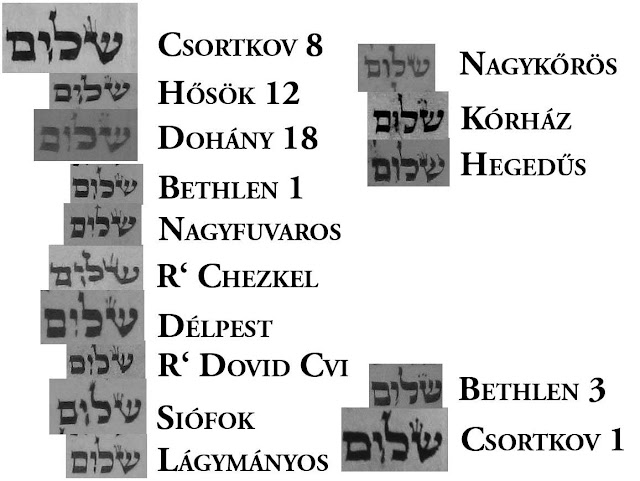A little research on vav k'tia in old Torah scrolls

According to the gemarah in Kiddushin 66b the letter vav in the word shalom at the beginning of
parashat Pinchas is broken in half.
בעל מום דעבודתו פסולה מנלן? אמר רב יהודה אמר שמואל, דאמר קרא (במדבר כה) לכן אמור הנני נותן לו את בריתי שלום, כשהוא שלם ולא כשהוא חסר. והא שלום כתיב! אמר רב נחמן: וי"ו דשלום קטיעה היא.(במסכת קידושין דף סו:)
How do we know that the service of the man with the blemish is invalid? - Said RabbiYehuda in Shmuel's name: because the Scripture says, " Behold, I give unto him my covenant of perfection: when he is perfect, but not when he is wanting. But shalom [peace] is written! - Said R. Nachman: The vav of shalom is broken off [in the middle
Practically in Yemenite Torah scrolls this is not done at all. Despite the fact that the Talmud says to write this vav broken, the Rambam, the Rif, the Rosh and the Tur did not bring down this to halacha. However rabbi Shlomo Ganzfried, the author of Keset Hasofer and Kitzur Shulchan Aruch among many other poskim do pasken this way (that we should write the vav broken) As to the question of how the broken vav should look in practice, opinions are divided;
Rabbi Yitzchak hakohen Rapaport, the author of Batei Kehuna (a student of Pri Chadash) checked how many Torah scrolls have this specific vav broken into two in his kehila in Venice (Italy), and found that
only two out of twenty. The others were a plain – whole, vav
The following are the results of my research in Hungarian Torah scrolls:
Of 15 Hungarian Torah scrolls only three had plain vavim. These can be seen on the right on the top of the picture.
According to rabbi Akiva Eger, the two parts of the vav have to touch each other in order to meet all the requirements of a regular kosher vav. This opinion corresponds to the two Torah scrolls seen at the bottom right of the picture.
On the left side we can see ten images with vavim competely cut into two. Normally, they would actually be considered a yod. These letters wouldn't be considered kosher as a vav anywhere else, but in this case they are excepted as kosher by many opinions.
If we find such a vav in a Torah scroll, we shoud not repair it. By doing so our acting would look like a great chutzpa toward our forefathers, as if we are saying that today we know how to write a Torah better.
based on rabbi Yosef Cohen's techings

Great post. shkoyach.
ReplyDeleteDo you have a source for Rav Yitzchoks Hakohenn Rappaport's teshuvah?
Here is the source r. Eli:
Deleteבתי כהונה-ג
72
סימן ך
from the last word of the seventh line from the bottom (left column) is
במנין
he says he checked 20 sifrei Torah, the most of them weren't broken, two were broken and an other two were already repaired by somebody and the two parts of the vav were reattached.
you can find it on hebrewbooks.org:
http://hebrewbooks.org/pdfpager.aspx?req=727&pgnum=72
In Torah sheleima R Kasher elaborates on this vav as well.
ReplyDeleteThe issue with finding sifrei Torah where the vav is completely cut and leaves a Shiur yud above is that sometimes if the space is large I think it would pasel the Sefer even though its a special case. Ie not that we are fixing it to say we know better but that the sofer just didn't write it correctly, even according to that shita.
I haven't found an exact source on the size of the break but if anyone has one I'd be very interested. I would think that anything larger than a normal נראה להדיא (which isn't very big) would be a real problem.
Any thoughts?
Thanks r ' Eli. Bli neder I will give the source.
ReplyDeleteI have seen many times in very old Sifrey Torah small Vov instead of cut Vov. The question is how you interpret "KTIAA" either small or cut in the middle.
ReplyDeleteThanks, R'Micha - for this timely and fascinating research piece. Yashar ko'akh.
ReplyDeleteThanks, reb Shmuel. And Here is the source r. Eli:
ReplyDeleteבתי כהונה-ג
72
סימן ך
from the last word of the seventh line from the bottom (left column) is
במנין
he says he checked 20 sifrei Torah, the most of them weren't broken, two were broken and an other two were already repaired by somebody and the two parts of the vav were reattached.
you can find it on hebrewbooks.org:
http://hebrewbooks.org/pdfpager.aspx?req=727&pgnum=72